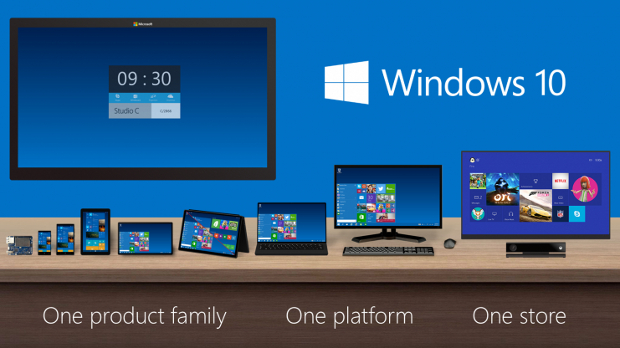Three months after its launch, Windows 10 now powers an estimated 132 million PCs, according analytics vendor Net Applications. Data released yesterday showed that Windows 10’s user share grew 1.3 percentage points in October to 7.9%.
Microsoft launched Windows 10 on 29 July, making October the third full month that the free upgrade for Windows 7 or Windows 8.1 devices was available to download and install or was pre-loaded on new devices.
October’s user share increase was slightly smaller than September’s gain of 1.4 percentage points, and far below August’s record 4.8 points, when massive numbers of users took advantage of the free upgrade.
Windows 10 accounted for 8.8% of all Windows devices in October, a higher number than its raw user share number because Windows powered 90.4%, not 100%, of all systems tallied by Net Applications. During October, Windows 10’s share of all Windows devices climbed by 1.5 percentage points.
Net Applications’ user share represented nearly 132 million Windows 10 PCs, assuming a total of 1.5 billion Windows devices globally, a figure that Microsoft regularly cites.
Microsoft has not publicised its own Windows 10 number since 6 October, when a top hardware executive said that 110 million devices were running the OS worldwide.
The same broad trend was echoed by Irish analytics developer StatCounter, which has also depicted the OS’s growth as slowing for the second month running. By StatCounter’s measurements, Windows 10 gained 1.4 percentage points of usage share – an activity indicator, as it counts Web page views – in October. However, StatCounter’s numbers indicated that Windows 10’s usage share growth had decelerated more sharply than did Net Applications’, as the former pegged September’s gain at 2.4 percentage points, a full point larger than October’s.
Net Applications’ numbers could also be used to render the slight slowdown in a different way: During October, an average of 706,000 devices were added to Windows 10’s rolls daily. In September, the average daily increase was approximately 794,000 devices.
Even so, Windows 10 continued to grow faster than Windows 7 did during its first three months after release. That OS – which until 10 had held the uptake record for a Windows edition – accumulated an 8.2% share of all Windows personal computers through its third full month. The narrowing gap between Windows 7’s and Windows 10’s performance – at the end of two months, it was 1 point – was due to impressive gains by the former as customers purchased new PCs during and after the 2009 holiday season, when personal computers still flew off shelves.
With about 132 million devices now running Windows 10, Microsoft is 13.2% of the way toward making its goal of putting the OS on 1 billion systems by mid-2018.
If Microsoft and Windows 10 could keep up that pace – which would be difficult, what with the explosive gains in 10’s first month – it would reach the 1 billion mark in June 2017. Microsoft is doing all it can to make that happen, including a controversial decision to automatically push the Windows 10 upgrade to most consumer and small business Windows 7 and Windows 8.1 devices in early 2016.
Update coming
In other Windows news, Redstone is no longer just a mineral in the Minecraft universe, it’s the codename for an upcoming major Windows 10 release that’s due next summer.
As WinBeta reports, Redstone will be the next big WIndows 10 update after the upcoming Threshold 2 release. Redstone will include a number of major new features, though Microsoft is reportedly still determining exactly which features to include in the update.
WinBeta does specify two new features in the works, however. One is an extensions feature for Edge that will let third-party developers add features to the browser, much like they can already do for Firefox and Chrome. Microsoft previously announced that this feature would arrive sometime next year.
The other big addition, WinBeta reports, is a feature similar to Continuity on iOS and OS X that makes it easier to move between devices as you work. With Continuity, you can start a task – such as browsing a webpage – on your computer and continue where you left off on your phone. According to WinBeta, Microsoft’s implementation should work similarly, though the report doesn’t provide exact details on how it will function.
Microsoft will provide developers with tools to build this feature into their apps as well, so it won’t be limited to apps that come with Windows 10, according to the report.
IDG News Service








Subscribers 0
Fans 0
Followers 0
Followers